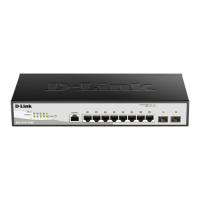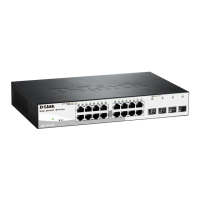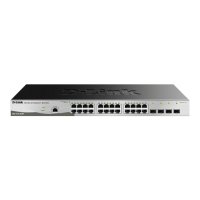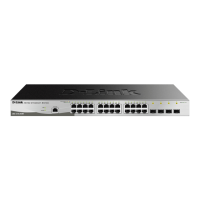4 Web-based Switch Configuration D-Link Smart Managed Switch User Manual
58
Figure 4.61 – L2 Functions > Port Mirroring
Selection options for the Source Ports are as follows:
TX (transmit) mode: Duplicates the data transmitted from the source port and forwards it to the Target Port.
Click “all” to include all ports into port mirroring.
RX (receive) mode: Duplicates the data that is received from the source port and forwards it to the Target
Port. Click “all” to include all ports into port mirroring.
TX/RX (transmit and receive) mode: Duplicate both the data transmitted from and data sent to the source
port, and forwards all the data to the assigned Target Port. Click “all” to include all ports into port mirroring.
None: Turns off the mirroring of the port. Click “all” to remove all ports from mirroring.
L2 Functions > Loopback Detection
The Loopback Detection function is used to detect the loop created by ports which other prevention
mechanism is not available, for example: Spanning Tree Protocol (STP). It usually happens when link
partner is hub or un-management switch. Loopback Detection feature can automatically shutdown the port
and sends a log to the administrator when loop occurred. Also, Loopback Detection function offers recovery
mechanism when loop condition removed.
Figure 4.62 – L2 Functions > Loopback Detection

